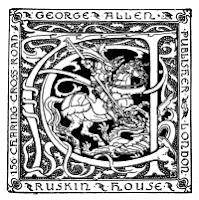Pride and Prejudice
by Jane Austen
Pride and Prejudice is an 1813 novel of manners by Jane Austen. The novel follows the character development of Elizabeth Bennet, the dynamic protagonist of the book who learns about the repercussions of hasty judgments and comes to appreciate the difference between superficial goodness and actual goodness. Wikipedia
Originally Published: January 28, 1813
Author: Jane Austen
Adapted from: Pride and Prejudice
Genres: Fiction, Romance Novel
Buy Virginia Woolf Books at Amazon
The PDF might take a minute to load. Or, click to download PDF.
If your Web browser is not configured to display PDF files. No worries, just click here to download the PDF file.
About the Author
Adeline Virginia Woolf (/wʊlf/; née Stephen; 25 January 1882 – 28 March 1941) was an English writer, considered one of the most important modernist 20th-century authors and a pioneer in the use of stream of consciousness as a narrative device. Wikipedia
Notable works: Mrs Dalloway (1925); To the Lighthouse (1927); Orlando (1928); A R...
Died: 28 March 1941 (aged 59); Lewes, England






_hires.jpg)